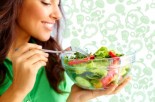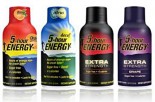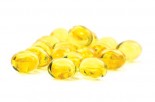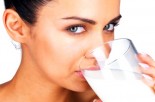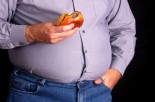Search Podcasts
Block & Clear Estrogen, One Meal at a Time
Monday, 01 July 2013Fancy scientists call it adaption, or the survival of the fittest. We call it eating smart.
But whatever you call it, here are foods that help your body fight off those “endocrine disrupters” (thank you Tori) that we have been talking about on the show.
1. Cruciferous veggies: Cruciferous vegetables such as broccoli, cauliflower Brussel sprouts and cabbage contain several powerful nutrients that detoxify bad estrogenic molecules. These nutrients include Indole-3 Acetate, Indole-3 Carbonyl and Diindolylmethane. These cruciferous veggies also contain sulfur containing nutrients such as Sulfuraphane and Phenyl Isothiocyanates that enhance liver detoxification processes and destroy cancer cell formation.
2. Healthy fat-rich foods: These are foods that are rich in saturated and omega-3 fatty acids. It includes plant based fats such as coconut oil, extra virgin olive oil and avocados. Raw nuts (other than peanuts) and seeds contain anti-estrogenic plant sterols. Organic poultry, wild-caught salmon, wild game and 100% grass-fed beef are great for healthy hormone function.
3. Alium family: The aliums include garlic, onions, scallions, chives and leeks. These are all rich in sulfur-containing amino acids and the powerful flavone anti-oxidant quercetin that both help the liver detoxify at a higher level and reduce the production of estrogen.
20 Surprising Things That May Cause Cancer (& 18 Ways to Help Prevent It)
Tuesday, 09 July 2013
20 Surprising Things That May Cause Cancer...
- Mammography radiation
- Chemotherapy and radiation
- Perfumes and fragrance products
- Cosmetics and personal care products
- Home cleaning products, including laundry detergent, dryer sheets, etc.
- Drinking non-organic milk or eating non-organic dairy products
- Hydrogenated oils and trans fatty acids.
- Plastic food containers - includes plastic lining inside food cans.
- Sodium nitrite - found in most processed meats.
- Pesticides, PCBs, chlorine and other chemicals.
5- Hour Energy, Long Term Problem?
Monday, 27 May 2013In its Adverse Event Reports, the FDA identifies a number of health-related adverse events in connection with 5 Hour Energy drinks.
Living Essentials, the manufacturer of 5-hour energy says it contains "about as much caffeine as a cup of the leading premium coffee." However, a recent test by Consumer Reports found that 5-Hour Energy contains 215 milligrams of caffeine per serving. In comparison, an average 8-ounce cup of coffee has about 100 milligrams of caffeine, although that varies according to how the coffee is brewed. Consumer Reports also finds that 8 ounces of Starbucks coffee is on the high side with 165 milligrams of caffeine.
So, it appears that 5-hour energy has up to double the amount of caffeine as a standard cup of coffee.
Do Health Executives Want to Fix Health Care?
Friday, 17 May 2013According to a report published in The American Journal of Medicine, medical bills are a major factor in more than 60 percent of the personal bankruptcies in the United States. Of those bankruptcies that were caused by medical bills, approximately 75 percent of them involved individuals that actually did have health insurance.
Can What’s in Your Medical Chart Cost You A Job?
Monday, 13 May 2013Electronic medical records are here, but does that mean we no longer will have privacy?
Could a previous illness cost you a new job promotion? Can employers get access to their employee's medical records? How about before a person is hired, will their medical history come in to play? What if you choose not to vaccinate, will your insurance refuse to cover your child for the measles?
Lots of questions, and here is the answer:
Maybe.
Should You Be Taking Vitamin D?
Wednesday, 24 April 2013Everyone is talking about Vitamin D, but is it something everyone should take? Currently, we are including a vitamin D level on most routine laboratory exams, but labs will never tell the whole story. Let's look at conditions associated with vitamin D deficiency.
The flu – In our profession of natural medicine we do not believe a person gets the flu from being sneezed on, breathed or from a door handle. We believe you get it because your immune system is not up to par. In a study published in the Cambridge Journals, it was discovered that vitamin D deficiency might lead children to respiratory diseases. A study was than conducted which showed that vitamin D reduced the incidence of respiratory infections in children. There is no reason in my opinion to think that the same protection wouldn’t be available for adults.
Muscle weakness – There are many reasons for muscle weakness, which include a lack of healthy protein and exercise in the diet. However, according to Michael F. Holick, a leading vitamin D expert, muscle weakness is usually caused by vitamin D deficiency. He states that for skeletal muscles to function properly, their vitamin D receptors must be sustained by vitamin D. Interesting.
Psoriasis - Vitamin D, along with Zinc, vitamin A, beta-carotene, and essential fatty acids have been a stalwart of treatment for chronic skin conditions including psoriasis. In a study published by the UK PubMed central, it was discovered that synthetic vitamin D analogues were found useful in the treatment of psoriasis. Hmmm.
For-Got Milk? That's Okay!
Thursday, 18 April 2013Cows milk, some see it is a wonderful calcium containing super-food. Others say it is a fattening, mucous stimulating, allergy causing disaster. Let's break this issue down by looking at the pros, misconceptions and cons of milk.
Pro: Milk is easily available.
Pro: It contains protein.
Pro: It is a food based calcium source.
Pro: It contains some Vitamin A, B6, Biotin, and Potassium.
Pro: May benefit teeth.
Misconception: Milk’s protein is easily accessible, and healthy? Milk proteins such as a hydrolyzed whey, or whey isolate have to be separated out of the milk, and than sold separately. So the muscle building, immune supporting milk properties are not necessarily available in the glass of milk you drink, but rather in the protein powder sold at the health food store.
4 Powerful Relaxation Techniques
Friday, 12 April 2013Here are the four relaxation techniques I spoke of on a recent show. Welcome Decker’s “stress countermeasures”.
Imagery (or visualization)
Imagery involves using your imagination to create a sensory experience of sights, sounds, feelings or taste that is relaxing. Imagery can help relieve stress, pain and depression; decrease side effects of chemotherapy like nausea; decrease blood pressure; improve sleep; boost immune function; shorten hospital stays; and speed healing. Guided imagery is when you use an outside person to help guide the images in your mind. It is sort of like telling you a story, but coaching you to “see” it in your mind.
Hypnotherapy (hypnosis therapy)
Hypnotherapy uses guided relaxation to arrive at a state of deep, attentive, focused concentration, sometimes called a trance, that can make it easier for you to relax and to control your body and mind. Hypnotherapy can enable you to block an awareness of sensations like pain, discomfort, nausea and fatigue; reduce fear and anxiety; create a sense of calm; speed recovery; and promote healing.
Scratch These Ingredients Off Your Shopping List... Forever!
Monday, 08 April 2013Things to Put on Your Do-Not-Buy Checklist...
Bring this list to the store with you, or pull it up on your smart phone. Lets de-mystify the big chemical names and labels to know what to stay away from to protect you and your family’s health.
High Fructose Corn Syrup
The top of my do not consume list! Fructose can affect your brain and body by making you feel less hungry, and encourage over-eating. It is in almost everything sweet like soda, cookies, ice cream and more for one simple reason, it’s cheap. But this low cost to the pocketbook, may be destructive to your health. There is a reason why Mexico and Europe use cane sugar instead of high fructose corn sugar (HFCS) because of safety concerns.
Opt-Out: For non-obese and non-diabetics consider raw sugar, sucanant, or honey. For weight loss and diabetes consider using stevia. Avoid artificial sweeteners. (Read on, they made the list also)
Sodium Nitrate and Sodium Nitrite
This food preservative helps retain red coloring in processed meat products. Research demonstrates it contains carcinogens, which can accumulate in the body. Conditions and diseases they have been linked to include stomach, prostate, and breast cancers. Possible issues may include fetal deaths, miscarriages, and birth defects.
Opt-Out: Seek for nitrate or nitrite-free meat products.
Are you Gluten Intolerant? Find Out Now!
Monday, 01 April 2013Gluten, a protein found in some grains, can cause serious problems for many people.
But the issues can go from a genetic intolerance called Celiac’s disease, to a non-specific type of “sensitivity." This “sensitivity” can cause a variety of symptoms from thyroid disorders to gas and bloating.
But why is it that the average medical doctor knows about Celiac’s disease, but knows nothing or denies the existence of gluten sensitivity?
It has to do with a weakness in conventional medical training called “hypofunction”. The great Naturopathic Doctor. Konrad Kail, discussed “hypofunction” in terms of an organ or a system, which is symptomatic to the patient, but not detectable by most or any available testing methods.
For years as gluten content was rising in grains such as wheat and corn, people started to have a variety of symptoms which where “unexplainable”.
But when these patients where tested, nothing showed up.
Is Evidence-Based Medicine Only an Illusion?
Tuesday, 19 March 2013
Throughout my career, I have heard the snickers of my medical doctor colleagues as they lay claim to practicing the only legitimate type of medicine.
I would ask a medical doctor why they would not recommend CoQ 10 or magnesium oratate for cardiovascular issues, and they would answer, "where is the research?" So, I would show them the research, and their answer would usually be that the research was not good enough to meet their standard.
Mark Twain said that there are three types of lies: a lie, a damn lie, and a statistic. The truth is that research is in the eye of the beholder.
Last year I received a letter from the head of McGuff, a medical supply company, saying that they where stopping the production of Vitamin C in an injectable form, due to the FDA’s claim that there was a lack of research for any medical application.
The background on vitamin C is that sailors who lacked it developed a disease called scurvy, which upon taking in vitamin C would be reversed. The FDA says that the use of vitamin C for scurvy was not proven, even though it had been used successfully in various forms for scurvy for over 100 years.
It's their right, but I disagree with it.
I would ask a medical doctor why they would not recommend CoQ 10 or magnesium oratate for cardiovascular issues, and they would answer, "where is the research?" So, I would show them the research, and their answer would usually be that the research was not good enough to meet their standard.
Mark Twain said that there are three types of lies: a lie, a damn lie, and a statistic. The truth is that research is in the eye of the beholder.
Last year I received a letter from the head of McGuff, a medical supply company, saying that they where stopping the production of Vitamin C in an injectable form, due to the FDA’s claim that there was a lack of research for any medical application.
The background on vitamin C is that sailors who lacked it developed a disease called scurvy, which upon taking in vitamin C would be reversed. The FDA says that the use of vitamin C for scurvy was not proven, even though it had been used successfully in various forms for scurvy for over 100 years.
It's their right, but I disagree with it.
Cell Phones Cause Brain Tumors? Alzheimers? A Doctors Opinion
Thursday, 21 March 2013
It’s a scene I know all to well. A patient or hospital calls me up, and I spend the next several minutes to hours on the phone, working to resolve the issue.
My whole life in the cell phone era I have been “available” by phone. Each ring I put that phone up to my head, and a little part of me wonders, like a smoker with a cigarette...."is this the one that kills me?"
As a physician I am the first one to admit that I am not a scientist or a researcher. I have no more insight into this issue than the average person, but I honestly can say that cell phones spook me.
So, lets look at what we do know.
My whole life in the cell phone era I have been “available” by phone. Each ring I put that phone up to my head, and a little part of me wonders, like a smoker with a cigarette...."is this the one that kills me?"
As a physician I am the first one to admit that I am not a scientist or a researcher. I have no more insight into this issue than the average person, but I honestly can say that cell phones spook me.
So, lets look at what we do know.
Cleaning Your Sinuses the Neti Way!
Sunday, 10 February 2013
I have been recommending the neti pot for sinuses ever since I first heard of it back in medical school. When my patients have an issue, I have them do it when they first wake up, and than again an hour before bed.
Preparation
Dissolve ½ teaspoon of sea salt and ½ teaspoon of baking soda in 8 ounces of lukewarm or body temperature distilled or previously boiled water to prepare the base solution.
Alternatively use more salt and less soda: ½ teaspoon of salt and ¼ of baking soda. Baking soda adjusts the pH of the solution to the one your body has.
Consider using premixed saline or a prepared salt package to make sure your percentage of salt to water is accurate.
3-5 drops of goldenseal tincture, or goldenseal tea added to the base solution will drain the mucous production.
To help with nasal dryness add 2-3 drops of sesame essential oil or aloe extract. (I love aloe.) This can be key for people suffering from nosebleeds.
2-3 drops of garlic oil, 2-3 drops of grapefruit seed extract or repeating with goldenseal can be used to help treat a sinus infection. But be careful, sinus infections can get serious so please see a physician or health care practitioner if symptoms are severe or they are reoccurring.
Preparation
Dissolve ½ teaspoon of sea salt and ½ teaspoon of baking soda in 8 ounces of lukewarm or body temperature distilled or previously boiled water to prepare the base solution.
Alternatively use more salt and less soda: ½ teaspoon of salt and ¼ of baking soda. Baking soda adjusts the pH of the solution to the one your body has.
Consider using premixed saline or a prepared salt package to make sure your percentage of salt to water is accurate.
3-5 drops of goldenseal tincture, or goldenseal tea added to the base solution will drain the mucous production.
To help with nasal dryness add 2-3 drops of sesame essential oil or aloe extract. (I love aloe.) This can be key for people suffering from nosebleeds.
2-3 drops of garlic oil, 2-3 drops of grapefruit seed extract or repeating with goldenseal can be used to help treat a sinus infection. But be careful, sinus infections can get serious so please see a physician or health care practitioner if symptoms are severe or they are reoccurring.
Cholesterol: The Myth, The Hero & The Demon
Monday, 18 February 2013
I was sitting around a table with three "lipidologists" (cardiologists who have been declared cholesterol gurus through certification), an invasive cardiologist (stent and cath person), and little old me, the Naturopathic Cardiologist.
There was an intense conversation going on about lipid particles and atherogenicity, specifically about which ones tend to cause heart disease more than others. I chuckled under my breath (to the ire of my colleagues) and said openly that "it is not the particle that's the problem; it's the oxidation of that particle."
In other words, LDL is safe, all of it, unless it becomes oxidized, and when it does, it not only can cause heart disease but probably cancer as well.
Imagine having rancid oil running through your veins all day, that's what causes the problem.
There was a pause, and than one of my lipidologists colleagues said, "That does not fit into this discussion." I answered sternly that you are arguing over which particles do what, but you are not discussing how to stop the disease. He answered, "That is a discussion for a different day." I chimed in, "When are we going to discuss how to stop the disease?" I received blank looks and the conversation continued.
Here is the problem...
There was an intense conversation going on about lipid particles and atherogenicity, specifically about which ones tend to cause heart disease more than others. I chuckled under my breath (to the ire of my colleagues) and said openly that "it is not the particle that's the problem; it's the oxidation of that particle."
In other words, LDL is safe, all of it, unless it becomes oxidized, and when it does, it not only can cause heart disease but probably cancer as well.
Imagine having rancid oil running through your veins all day, that's what causes the problem.
There was a pause, and than one of my lipidologists colleagues said, "That does not fit into this discussion." I answered sternly that you are arguing over which particles do what, but you are not discussing how to stop the disease. He answered, "That is a discussion for a different day." I chimed in, "When are we going to discuss how to stop the disease?" I received blank looks and the conversation continued.
Here is the problem...
Genetics Load The Gun, Lifestyle Pulls the Trigger
Thursday, 07 February 2013Is this a shameless gun analogy, or am I trying to make a point?
Actually, it is a little of both.
Mort, Matt, and Seth.
Mort is a 78-year-old male who was brought in by his son Matt who was 58, and Matt's son Seth who was 35 years old.
Two years ago Mort had his fifth stent implanted into his coronary arteries to help repair the two bypass surgeries, which had failed over time to keep blood pumping into the heart muscle. Mort was told by his previous cardiologist that he was lucky to have a technology, which could "buy him a few more years", because he just had bad genetics.
Matt, Mort's son, had already had a heart attack at 45 with a nice little Mort starter kit of three stents. He felt that bypass was inevitable in the next few years. Seth joked with me that he was looking at his future, but uneasily.
Combined, Mort and Matt where on 14 medications. The cardiologist wanted to start Seth on cholesterol lowering medications even though he was without symptoms and still a young man.
Note to the CDC: Change Course Before the Iceberg
Monday, 28 January 2013The mission of the CDC is as follows:
"Collaborating to create the expertise, information, and tools that people and communities need to protect their health – through health promotion, prevention of disease, injury and disability, and preparedness for new health threats"
In my opinion - as well as many other doctors, physicians, PhD's, pharmacists, chiropractors, public health officials, and health care practitioners - the CDC is failing in it's mission.
The CDC is like any other giant government organization, in that it tends to change course only after it hits the iceberg. In the first portion of the above mission statement it says collaboration, but in reality, that's not what happens. True collaboration would mean to work with anyone who has a hand in health care, which is not just medical doctors, osteopathic doctors, and PhD's.
I have reversed thousands of cases of heart failure, treated and reversed thousands of patients with heart disease and have never received a call from the CDC to "collaborate". In addition, the best people I know in all fields of medicine who are integrating models and systems with amazing documented success have never received a call from the CDC.
The Mind-Body Connection: Not just for Hippies, Yogis, & Saints
Monday, 21 January 2013Simply put, my patients are intimidated by the phrase "mind-body" connection. As a cardiologist, the majority of my patients are in their 5th-8th decades of life, and they look at the "mind-body" connection in three ways.
The first is as a 70's pot smoking, acid dropping rebel. The second is as a pagan (not necessarily bad as many of my seniors have embraced eastern religions) monk who lives a simple life and meditates on a daily basis, or third as a pious Christian holy person who hits their knees in supplication on a daily basis and is a regular confession.
I explain to them what their simple mistake is; the mind-body connection does not have to be a mind-body-spirit connection; especially at first.
With any chronic disease there is either a life threatening aspect to it, a quality-of-life threatening aspect, or both. A person's perspective on their disease state can be doom and gloom, a hand-over of power, or an embracement of the issue to learn about who they are.
Medically, we know that negative emotions decrease the healing systems of the body, including the neurological system with neurotransmitters (hard to get well with adrenaline shooting though veins all day), the immune system, the endocrine system, as well as the inflammatory/anti-inflammatory components of the body.
Lisa Ann: Curing Her Disease Without Her Family
Wednesday, 16 January 2013As a Naturopathic Doctor and cardiologist I split my time between heart and everything else about 60/40, so when a 16 year old with rheumatoid arthritis was coming in I wasn't surprised.
However when she showed up, I found a fluid-bloated young girl in a wheel chair.
Turns out she was maxed on medication including steroids and a drug which has a side effect of lymphoma. The mother was overweight with poor skin, the father refused to come saying that the daughter was already seeing the finest physicians in the world at the Mayo Clinic.
I did a brief physical and had an explanation that because of her food and life habits, along with environmental toxicity, her body had become allergic to her joints. The family although reasonably wealthy, lived on processed (junk) foods. The mother stated that the other two children where obese, and that the father although thin, had a heart attack before the age of fifty.
I explained to the mom that they had a toxic and sick house, and that all the junk food needed to go. I arranged for one of my interns to take the family to Whole Foods, and the mother started to cry.
You CAN Avoid Weight-Gain During The “Holidaze”
Monday, 26 November 2012
As a cardiologist who specialized in prevention and the natural reversal of heart disease, I used to dread 1/12th of the year, December. Most outsiders to the profession do not know this, but for most cardiologists December is our busiest month.
There are a couple of reasons why, but the first issue is depression.
We know that depression or feeling "holiday blue" increases the risk of ACS (Acute Coronary Syndrome) or heart attack.
The second reason, and the most modifiable, is holiday habits including nutrition. Holiday and nutrition, why do these words have to "cancel each other out"? When we hear the words "holiday and nutrition", we think immediately of sugar, overeating, and gaining weight.
So about ten years ago I put together a "holiday plan" for my non-diabetic, non-acute, (no immediate crisis) patients. Over ten years the patients who followed this did not gain weight, enjoyed food and fun, and had far more enjoyable holiday season then the ones that did not.
There are a couple of reasons why, but the first issue is depression.
We know that depression or feeling "holiday blue" increases the risk of ACS (Acute Coronary Syndrome) or heart attack.
The second reason, and the most modifiable, is holiday habits including nutrition. Holiday and nutrition, why do these words have to "cancel each other out"? When we hear the words "holiday and nutrition", we think immediately of sugar, overeating, and gaining weight.
So about ten years ago I put together a "holiday plan" for my non-diabetic, non-acute, (no immediate crisis) patients. Over ten years the patients who followed this did not gain weight, enjoyed food and fun, and had far more enjoyable holiday season then the ones that did not.
